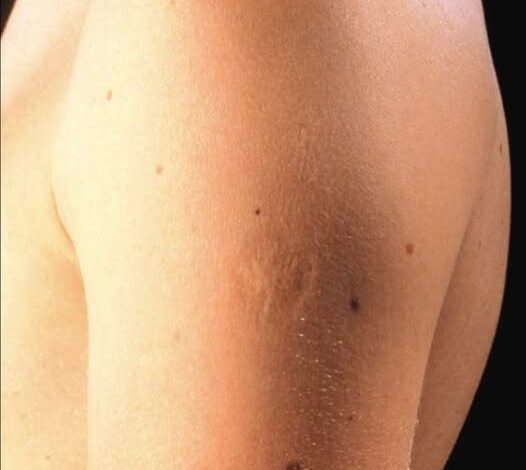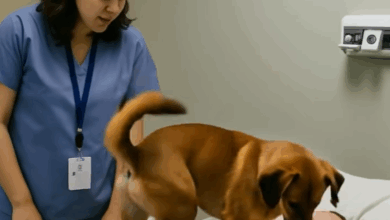
Here Is The Truth Behind This Scar On Peoples Upper Left Arm
When I was a child, I often found myself fascinated by the little details about the people I loved. One of the earliest and strangest curiosities I carried was about a small scar on my mother’s arm. It sat high on her upper shoulder, round and oddly textured, almost like a ring of tiny indents circling a deeper pit in the middle. It didn’t look like the scars I got from falling off my bike or scraping my knee. It looked deliberate, almost designed. I couldn’t explain why, but that scar always drew my eye.
At first, I asked about it repeatedly, as children do. My mother would sigh softly and explain, though I never really understood her words at the time. Over the years, my curiosity faded. The scar became invisible to me, just another feature of her arm I barely noticed. Until one day, years later, while helping an elderly woman step off a train, I saw the exact same scar in the exact same place. That old intrigue sparked instantly, as though the memory of childhood curiosity had been waiting all along for that moment.
I didn’t get a chance to ask the woman about it—the train moved on and so did she—but the image stuck in my mind. That night I called my mother and asked again: what was that scar? Why did she have it, and why did other people her age seem to have the same one? She chuckled at my sudden return to childhood curiosity and reminded me of what she had told me years before. That mark came from the smallpox vaccine, a medical intervention that changed the course of human history.
Her explanation hit differently now that I was an adult. I finally understood the weight of it. The scar wasn’t just a blemish—it was a badge, proof that she had been vaccinated against one of the deadliest diseases the world had ever known.
For centuries, smallpox was one of humanity’s greatest enemies. It swept through communities, killing about three out of every ten people who contracted it. Survivors often bore deep scars across their faces and bodies, living reminders of the virus’s cruelty. According to the Centers for Disease Control and Prevention, smallpox was responsible for untold millions of deaths before the modern vaccine campaign began.
The smallpox vaccine itself wasn’t like the ones we know today. It was delivered using a two-pronged, bifurcated needle, designed to scratch the vaccine into the skin rather than slip it painlessly into muscle. The vaccinator would prick the skin multiple times, depositing the vaccine into the dermis. Within days, a bump would appear, then a blister, which would eventually burst, scab over, and finally heal into the distinctive scar. That scar, circular and unmistakable, was proof of immunity. Unlike today’s vaccines, which usually leave little to no trace, the smallpox vaccine announced itself boldly.
My mother explained that in the United States, routine smallpox vaccination stopped in 1972 because the disease had already been eradicated here. Globally, after a massive coordinated effort led by the World Health Organization, smallpox was officially declared eradicated in 1980. It remains the only human disease ever completely wiped off the face of the Earth by vaccination. That fact alone makes the scar significant. It isn’t just a mark on skin—it’s a symbol of triumph, the visible reminder of how science, persistence, and global cooperation defeated something that had terrorized humanity for thousands of years.
Hearing my mother’s story made me look at her scar differently. What once seemed strange or even ugly now appeared noble, almost beautiful in its meaning. She had lived during the last generation to bear that mark, to carry on their arms the evidence of a collective battle fought and won. Millions of people across the world share that same small scar, and while they may never meet, they are all bound by the same history.
The more I learned, the more I realized how much that tiny scar represented. It reminded me of the people who had come before, those who lived through outbreaks when smallpox was still a real fear. It reminded me of children who had lined up in schools, rolling up their sleeves for a vaccine that hurt, scarred, and yet saved their lives. It reminded me of doctors, nurses, and volunteers who traveled to remote villages, carrying vaccines in boxes packed with ice, determined to reach every last community until smallpox had nowhere left to hide.
Of course, not everyone today recognizes what that scar means. Younger generations—myself included, until recently—often see it as just an odd blemish on an older person’s skin. They don’t realize that without it, millions more lives might have been lost, and the world might still be living in fear of a virus that disfigured and killed indiscriminately. In a way, the fading of that knowledge shows how successful the vaccine was. Smallpox is so thoroughly gone that we no longer think about it. The scar is the only reminder.
I thought about how different things are now. Modern vaccines rarely leave any visible trace. Children today grow up without those scars, and many will never even hear of smallpox beyond a passing mention in a history book. And yet, they still benefit from the legacy of that campaign. Every modern vaccine—against measles, polio, influenza, and more—stands on the shoulders of smallpox eradication. The methods, the infrastructure, and the very belief that humanity could beat a deadly disease were all built during that fight.
That night after talking with my mother, I found myself checking my own arm, of course. No scar. Born after the early 1970s, I never received the vaccine. I never needed it. For a moment, I felt almost left out of something profound, as though my skin missed a piece of history. But then I realized the deeper truth: not having the scar is its own privilege. It means I was born into a world where smallpox no longer existed, where the battle had already been fought and won on my behalf.
The scar, then, has a double meaning. For those who bear it, it is proof of survival and responsibility, a marker of participation in one of humanity’s greatest victories. For those who don’t, its absence is proof of safety, the gift of a world healed before we entered it. Either way, it is a reminder that science and cooperation can change the fate of billions.
Now, when I see that scar—on my mother, on an elderly stranger’s arm, on an old photograph—I don’t just see skin. I see resilience. I see sacrifice. I see the quiet heroism of ordinary people who lined up for a painful shot, not just to protect themselves, but to rid the world of a disease forever. It’s a reminder worth noticing, and worth remembering, before the last of those scars fades from view.




